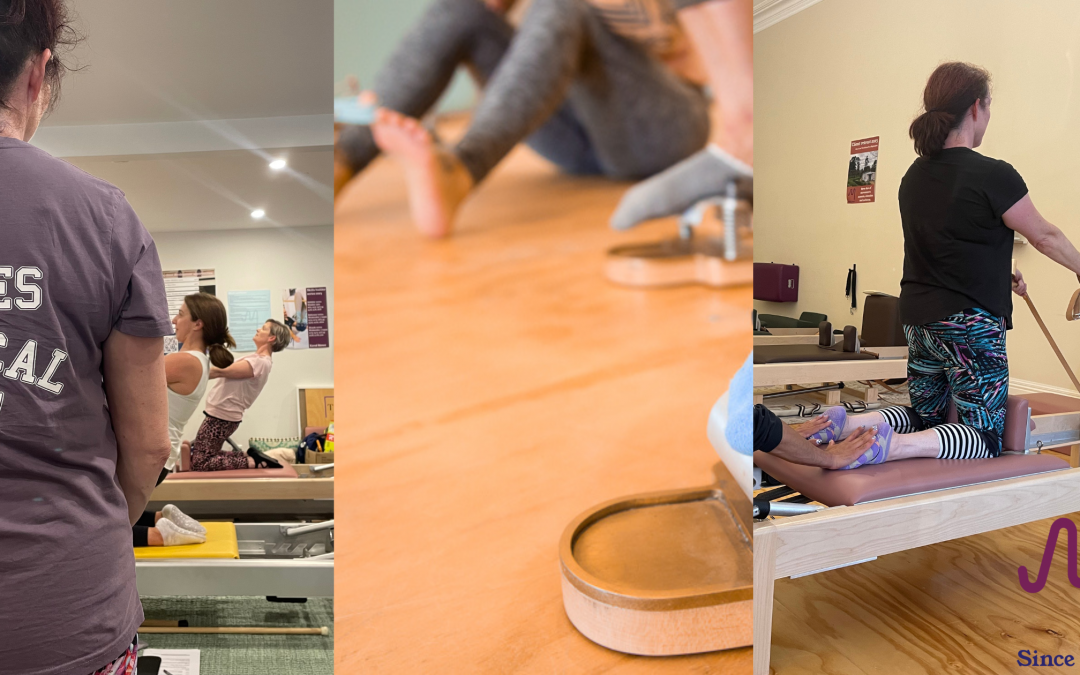This week we focus on making you feel confident and strong with the kneeling exercises on the Reformer and related exercises from the Cadillac at our beautiful North Melbourne studio. Additionally, we travel deeper into the original mat list and continue to push your memory and endurance.
In my experience the two main reasons for feeling shaky or uncomfortable in high / upright kneeling on the moving Reformer are
- Not being able to ground or connect to the shoulder blocks
- Not being able to lock in to a lifted vertical position through the torso and legs
What does ‘good kneeling’ look like?
In terms of Pilates or exercising in kneeling we need a strong base and connection or activity in all directions to feel grounded, especially while the apparatus is moving. This looks like toes down, heels reaching back and a sense of unweighting the knees and stacking the pelvis and spine as vertically as possible without a large arch in the low back (unless that is your natural bony anatomy). The two reasons listed above are absolutely related!
What does ‘good kneeling’ feel like?
Trust, stability and power. This set up prepares you beautifully for the side kneeling arm work (of our nightmares) and eventually the arm series executed while standing on top of the Reformer.
Are you uncomfortable kneeling for periods of time, say, on the Reformer or Cadillac?
Of course, we respect knee pathologies or post-surgical indicators that ask us not to bear weight and we would work with this in a private session. In the group class format when pathology free, but still uncomfortable, we look for clues at the surrounding musculo-skeletal structures
- Are you stiff in your lower back or pelvic area?
- Do you feel your knee caps being pulled tight?
- Are your quads very tight?
- Are your toes really uncomfortable or inflexible?
Most of these issues are addressed in your regular classes, however it may suggest you need to spend some more time on a mobility routine at home to reduce discomfort and free up your body.
The main reason for instability in kneeling – tight toes…
I don’t want to proselytize about modern shoes, however most of us have reduced big toe mobility and poor foot function which isn’t helped by the shoes we wear. Poor big toe function has a huge impact on use of the pelvic musculature and bony alignment which while we often focus on in Pilates, we probably should collectively be looking down south first!
If you want to be more comfortable in your feet, trust your kneeling positions on a moving surface, check out this video from The Foot Collective and add some foot and toe health care to your weekly routine.
Nic and Co – your friendly North Melbourne Pilates experts

